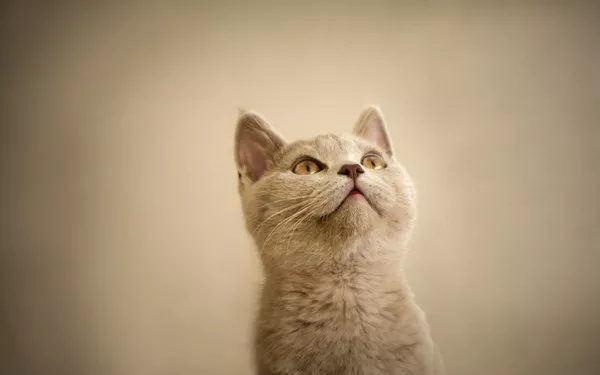Introduction to Bengal Cats
Bengal cats are a fascinating breed known for their striking appearance and playful personalities. Originating from the crossbreeding of domestic cats with the Asian leopard cat, Bengals have inherited the distinctive rosetted or marbled patterns of their wild ancestors, coupled with the loving nature of domestic felines. This unique combination has made them increasingly popular among cat enthusiasts worldwide.
Genetics Behind Coat Colors
Understanding the genetics of coat colors in Bengal cats requires a glimpse into feline genetics. Coat color inheritance is primarily determined by genes located on chromosomes, with specific genes responsible for producing different pigments. The interaction between these genes dictates the coat color and pattern of a cat.
In Bengals, the coat color is influenced by genes responsible for producing eumelanin (black pigment) and pheomelanin (red pigment). The presence or absence of certain alleles of these genes determines the base color of the coat, while additional genes control the pattern, such as spots or marbling.
Some colors, like brown and seal lynx point, are more common due to dominant alleles, while others, like blue and charcoal, are rarer due to the presence of recessive alleles or modifier genes that dilute the coat color.
Overview of Recognized Colors
Major cat fancier associations, such as The International Cat Association (TICA) and the Cat Fanciers’ Association (CFA), recognize several colors and patterns in Bengal cats. These include:
Brown: The most common color, characterized by a warm, golden background with dark brown to black spots or marbling.
Seal Lynx Point: Featuring a lighter base color with darker points on the ears, face, paws, and tail.
Seal Mink: Similar to seal lynx point but with a slightly darker base color.
Seal Sepia: The darkest of the snow colors, with a rich, warm coat and pronounced spotting.
Blue: A rare color caused by a dilution gene, resulting in a cool-toned, bluish-gray coat.
Charcoal: Another rare color caused by a modifier gene, producing a darker, smokier appearance with enhanced contrast in the markings.
Rarest Bengal Cat Colors
Among Bengal cat colors, blue and charcoal are considered some of the rarest. Blue Bengals have a diluted eumelanin pigment, resulting in a soft, grayish-blue hue. This dilution gene must be inherited from both parents, making blue Bengals relatively uncommon.
Charcoal Bengals, on the other hand, possess a modifier gene that intensifies the contrast between the background color and the markings, creating a striking appearance reminiscent of a charcoal sketch. The inheritance of this gene follows a complex pattern, further contributing to the rarity of charcoal Bengals.
What makes these colors unique is not only their scarcity but also their captivating aesthetics, often garnering admiration and intrigue from cat enthusiasts.
Breeding for Rare Colors
Breeding for rare colors in Bengal cats requires careful selection of breeding pairs with the desired genetic traits. Breeders must possess a deep understanding of feline genetics to predict the likelihood of producing rare-colored offspring. This involves analyzing the genetic makeup of potential breeding cats and considering the inheritance patterns of rare color genes.
However, breeding for rare colors comes with its challenges. It requires patience and perseverance, as producing desired outcomes may take several generations of selective breeding. Additionally, ethical breeders prioritize the health and well-being of their cats, ensuring that breeding practices prioritize overall feline welfare over color preferences.
Caring for Rare-Colored Bengals
While caring for rare-colored Bengals does not differ significantly from caring for cats of other colors, there are some considerations to keep in mind. Proper nutrition, regular veterinary care, and sufficient exercise are essential for maintaining the health and well-being of any Bengal cat, regardless of its coat color.
Owners of rare-colored Bengals should also be mindful of their cat’s unique coat characteristics. For example, blue Bengals may be more prone to sunburn due to their lighter coat color, necessitating indoor living or access to shaded outdoor areas.
Showcasing Rare Bengals
Rare-colored Bengals often become the stars of the show in cat competitions and exhibitions. Breeders and owners proudly showcase their rare-colored cats, highlighting their unique beauty and distinctive traits. Anecdotes and case studies of rare-colored Bengals serve as testaments to the dedication and passion of breeders who strive to preserve and promote these exceptional felines.
Legal and Ethical Considerations
When breeding for specific colors, breeders must consider not only the aesthetics but also the health and ethical implications. Overemphasis on rare colors at the expense of genetic diversity can lead to health issues and perpetuate harmful breeding practices. Responsible breeding practices prioritize the overall health and welfare of the cats, ensuring that genetic diversity is maintained to mitigate the risk of hereditary diseases.
Furthermore, breeders must adhere to legal regulations and ethical standards governing animal breeding practices. This includes obtaining necessary permits, adhering to breeding guidelines set forth by cat fancier associations, and prioritizing the well-being of the cats above all else.
Conclusion
In conclusion, understanding Bengal cat colors goes beyond mere aesthetics; it reflects a deeper appreciation for the intricate world of feline genetics and the artistry of nature. Owning a rare-colored Bengal cat is not only a testament to their beauty but also a responsibility to ensure their health and well-being.
Through careful breeding practices, dedication, and responsible ownership, rare-colored Bengals continue to captivate hearts and minds worldwide. They serve as ambassadors for their breed, showcasing the unique blend of wild and domestic traits that make Bengal cats truly exceptional companions.
Related Topics:























